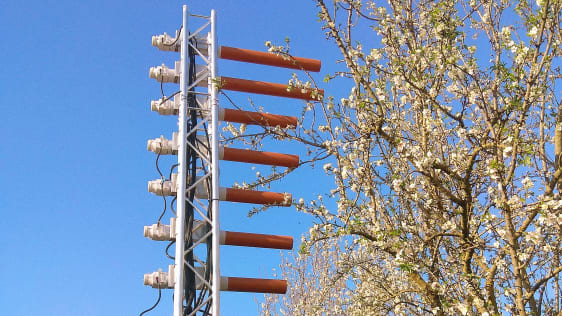Dec . 16, 2024 12:13 Back to list
Do Pear Trees Require Additional Pollination for Optimal Fruit Production?
Do Pear Trees Need Auxiliary Pollination?
Pear trees are cherished for their juicy, sweet fruits and beautiful blossoms. Many gardeners and farmers cultivate these trees, seeking to maximize their fruit yield. However, a common question arises do pear trees need auxiliary pollination? Understanding the pollination process and the factors influencing pear tree fruit production can help ensure a successful harvest.
Pollination Basics
Pollination is the transfer of pollen from the male part of a flower (the anther) to the female part (the stigma). For many plants, this process is essential for fertilization and fruit development. Pear trees belong to the genus Pyrus and are typically classified as either self-pollinating or cross-pollinating. While some varieties can set fruit with their own pollen, others require pollen from different, compatible pear varieties to produce fruit.
Self-Pollination vs. Cross-Pollination
Self-pollinating varieties, such as the 'Bartlett' pear, have evolved to facilitate fertilization without needing pollen from other trees. However, even self-pollinating trees can benefit from cross-pollination. When pollen from another pear variety is introduced, it can enhance fruit quality, increase fruit set, and improve overall yield.
On the other hand, cross-pollinating varieties, such as 'Bosc' and 'Anjou,' rely on pollen from a different pear variety to produce fruit. These trees typically require at least one compatible partner nearby to ensure successful pollination. In general, cross-pollination leads to better fruit development in terms of size and flavor.
The Role of Pollinators
In nature, pollinators play a crucial role in the pollination process. Bees, butterflies, and other insects are often responsible for transferring pollen between flowers. For pear trees, honeybees are particularly effective pollinators. They can travel from tree to tree, ensuring that cross-pollination occurs efficiently. Therefore, having a healthy population of pollinators in the vicinity of pear orchards is essential for maximizing fruit production.
Factors Affecting Pollination
do pear trees need auxiliary pollination

Several factors can influence the need for auxiliary pollination in pear trees. One of the most important factors is the timing of flowering. If different varieties of pear trees bloom simultaneously, they can easily cross-pollinate. However, if their blossoming periods are misaligned, the likelihood of fruitful cross-pollination diminishes, necessitating a focus on auxiliary pollination methods.
Environmental conditions also play a vital role. Weather events such as rain, wind, and temperature fluctuations can affect bees' foraging behavior. If conditions are not favorable during peak blooming periods, pollination rates may drop. To mitigate these risks, gardeners can consider planting a mix of self and cross-pollinating varieties, or they can even introduce beehives to their orchards to ensure adequate pollination.
Strategies for Successful Pollination
To ensure optimal pollination and fruit production, pear tree growers can employ several strategies
1. Plant Compatible Varieties When selecting pear trees, choose a mix of self-pollinating and cross-pollinating varieties. This not only increases the chances of successful pollination but also enhances the overall diversity of the orchard.
2. Encourage Pollinator Presence Creating a pollinator-friendly environment is essential. Planting flowers and providing habitats for bees can help in establishing a strong pollinator presence.
3. Monitor Flowering Times Keep an eye on the flowering times of your pear trees. Choose varieties that bloom at the same time to maximize cross-pollination opportunities.
4. Consider Hand Pollination In cases where natural pollinators are scarce or conditions are less than ideal, hand pollination can be an effective technique to ensure fruit set, although it requires more labor.
Conclusion
In conclusion, while some pear trees can self-pollinate, many benefit from auxiliary pollination to produce their best yields. Understanding the differences between self-pollinating and cross-pollinating varieties, along with the significance of pollinators, is crucial for anyone looking to grow pear trees successfully. By planting compatible varieties, fostering a healthy ecosystem for pollinators, and being attentive to flowering times, growers can significantly enhance the chances of a bountiful pear harvest.
-
Plant Pollen Analysis: Fast & Accurate with GPT-4 Turbo
NewsAug.02,2025
-
KiwiPollen with GPT-4 Turbo: AI Health Supplement Boost
NewsAug.01,2025
-
Pollen Peach Tree AI Management with GPT-4-Turbo
NewsJul.31,2025
-
Eco Fruit Paper Bags for Peak Freshness | Durability Focused
NewsJul.31,2025
-
Pollen Peach Tree for Pure Pollination and High-Quality Peach Pollen
NewsJul.30,2025
-
Premium Cherry Pollen for Pure Pollination & Different Types
NewsJul.30,2025